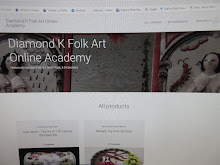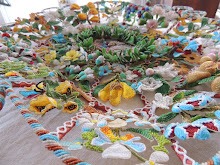Single Leather Clog
I just found this wonderful little gem and am excited to share it with ya'll. It is, as stated above, a clog. Not to be confused with a wood and iron patten (you can search for those here on the blog in the upper left search tab). How is a clog different from a patten you ask? Both are worn as overshoes to protect the rather fragile shoes of the period when walking in mud and on city streets. Pattens have alder wood soles with an attached forged iron ring or shape that raises the foot up off the ground. They tie on over the shoe usually with leather tabs. They are robust. Made for out and about in the weather. But clogs....these things have always fascinated me. If there were pattens, what would the need be for clogs?Clogs are usually made from the same fabric as the shoe, such as in the above pair from the Joseph Box collection at the Powerhouse Museum. They are obviously just as delicate as the shoes they are meant to protect and thus, the general thought is that they were worn indoors to help protect the shoes. My practical thinking obviously asks well why on earth would you wear these indoors? A lady wearing such a shoe would not be slopping around in the kitchen or have dirty floors enough to need a protective overshoe. Were these worn from the house out to the carriage? I honestly have no idea...I got a lot of questions whenever time travel becomes the new rage....
One cannot say it was the shape of the heel seat either...as this pair of pattens from the Met have the same deep heal seat. They have the typical plain leather latchet tie straps usually associated with the more robust wood and iron pattens. I have never seen a patten with a cloth strap.
This single clog, one of a pair at one time of course, I would say was more of a working-class middling sort's possession. Maybe they were owned and worn by a merchant....someone who wanted to protect their shoes indoors but needed something a bit more robust than a cloth upper. AND...speaking of uppers...we get to the reason I had to add this amazing creature to the collection in the first place. The upper is closed! Look back up at the Powerhouse Museum examples, and the Met...all of them I have ever seen are open-toed with just a strap to tie up over the vamp of the shoe. I have never, ever seen a fully closed upper on a clog, so this just thrills me to no end. Above here you can appreciate the deep heal seat to accommodate the timber heels of the period.Construction of the heel is the same on these as is typically seen on the cloth examples. One may be so inclined to wonder if the timber heels were so very fragile they needed support from underneath in order to get the most wear out of them???From the view of the sole one can see these did get much wear. There is but a tiny single layer stack on the heal, other than that they are flat on the bottom. The wear shows they were tied on quite tight, as there are no signs from the wear on the sole that these were shuffled along as a person walked in them. The heels did not drag off from flopping down off of the shoe when the foot was picked up.
Have you ever seen a solid or closed upper clog? If so, send me the link, please!





























No comments:
Post a Comment